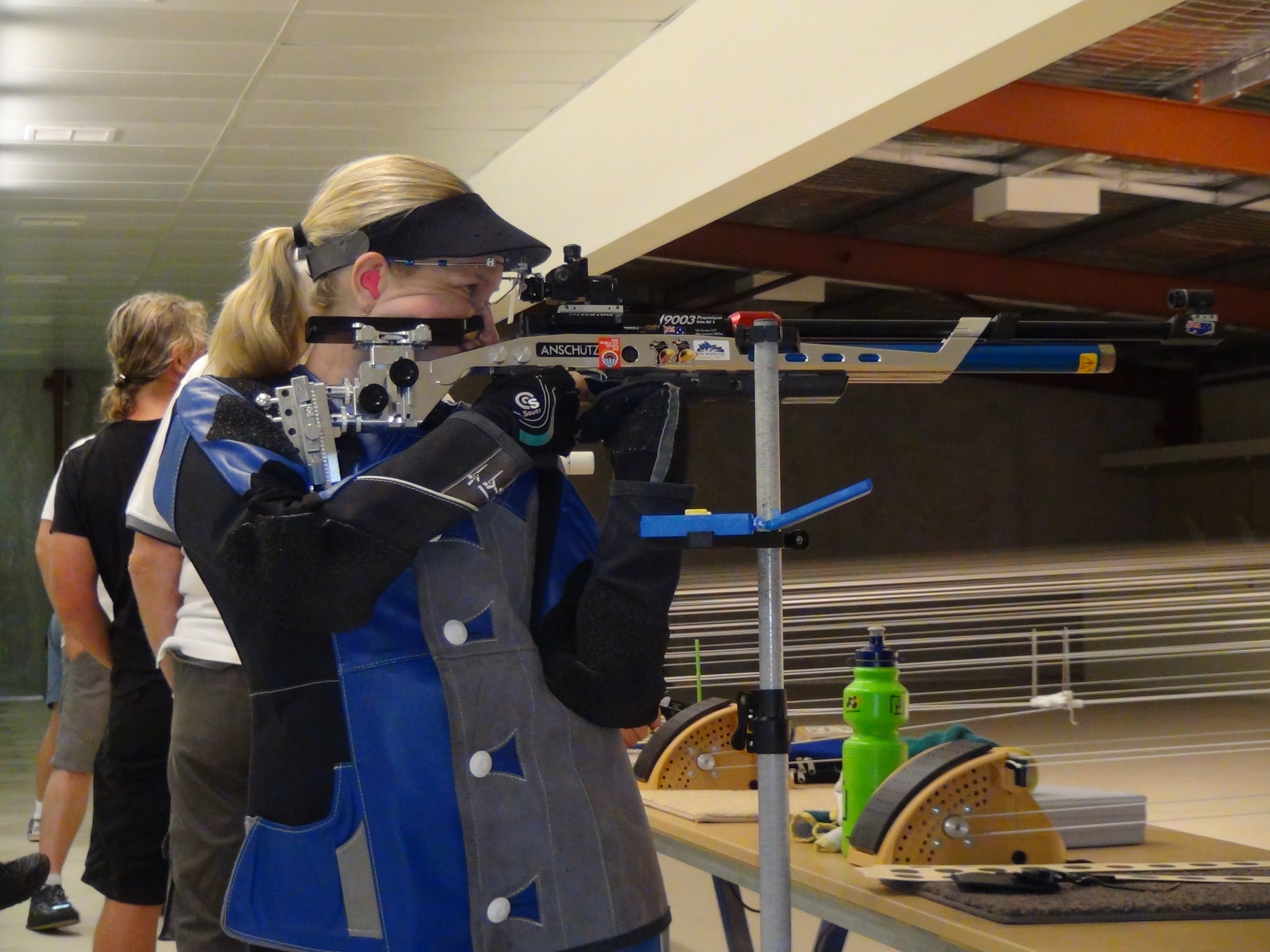Posted by Coach Excellence on January 9, 2025 in
Position |
∞
The standing position relies on balance and utilising the body structure to support the rifle. |
For starters – stand at an angle of roughly 90° to the direction of aim, placing the feet approximately shoulder width apart.
The modern trend is to have slightly more weight on the front leg with the hip pushed a little towards the target. This provides a convenient resting point for the arm supporting the rifle.
Precisely how much “hip tilt” and weight should be on each leg????….. how long is a piece of string!
What can be said is that it is certainly personal to the shooter and the particular body shape and it may well change as you gain more experience, but the description above is a good place to start.
The position should be comfortable, within the rules and practical. The coach will help to refine the position. |
Hold your head as straight and upright as reasonable – your ears will thank you with a more reliable feeling of balance.
If necessary, cant or turn the rifle in comfortably towards the head.The bone structure, not the muscles
must support the rifle.Bend the upper portion of the body slightly backwards so that the rifle is over the body’s centre of gravity. Experiment with this to find the spot that is just right.
Use the palm rest to help keep the rifle high enough to ensure that the neck is relatively upright without disrupting the hold. There are many varied palm rests – check out what other shooters are successfully using, and don’t be afraid to adapt or create your own.
The supporting arm rests against the rib cage. The stability of the position is enhanced when a shooting jacket is used. It is also wise to complete some of your work without the jacket – this gives you the opportunity to get in touch with what is going on. The shooter shown here has not yet put on his shooting jacket so you can better see the line of the body.
Sight raiser blocks are often an excellent investment as the blocks life the sights just enough to eliminate the “squashed neck” syndrome. |
 |
| Olympian and Commonwealth Games Gold medallist, Tim Lowndes |
Your coach will adjust the sights closer to your eye and lower the rifle’s butt plate to allow for appropriate height alignment and good fit into the shoulder.
 |
The butt length is often reduced to bring the weight of the rifle closer to the shooterA sling is not used in the standing
shooting, and shooting boots or sturdy shoes are essential for standing to assist the body with stability.
A pair of correctly fitting shooting trousers completes the ensemble. The trousers support the lower back.
Spend time holding the rifle and setting up your position, both with your eyes open and eyes closed. Setting up without the use of your eyes, and the benefits are more fully explained in the section on shooting position |
| SPECIAL ADDITIONAL NOTES FOR AIR OR SPORT RIFLEAs a palm rest is not used in Air rifle (as shown here) or if you do not use one with a Sport or Free Rifle, there are a few standard methods of supporting the rifle. |
 |
You can….
…. roll the supporting hand into a fist and support the rifle on top of the knuckles just in front of the trigger guard area, keeping the forearm, wrist and back of the hand straight and as vertical as possible. This works well for those who require the extra height to successfully reach the targets |
| Robyn Ridley – Dual Olympian and multiple Commonwealth Games team member |

Females can often “tilt” their hips forward to the target as shown by Robyn.

|
…or support the rifle in the V of the hand, between the thumb and the body of the hand. Great for those who are tall and where height is not an issue.There are many variations to this sound basic position, however experimentation should only be undertaken after the shooter has some experience.
Key issues of standing
Changing the direction of the feet (ever so slightly) will impact on the direction of the barrel. Get to know where your feet should be – measure the distance or draw a diagram to help you remember.
Legs must be controlled, not locked tight at the knees
If your boots need inserts to help your ankles, then do it
The body will move – learn to recognise when you are in the “least movement” stage and use that time to complete the shot
Standing is a comfortable position. Look, and talk to other good shooters for hints that you may wish to try |
Tags: core stability, shooting position, standing, standing positions, sway, TRAINING







